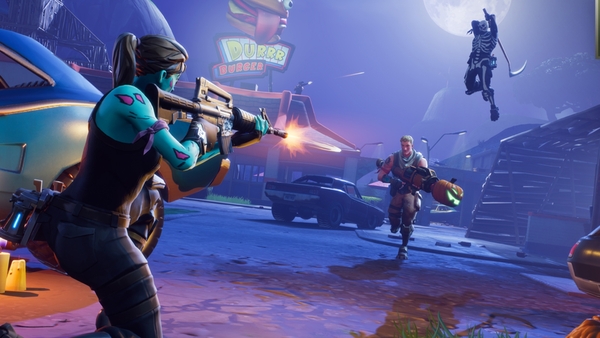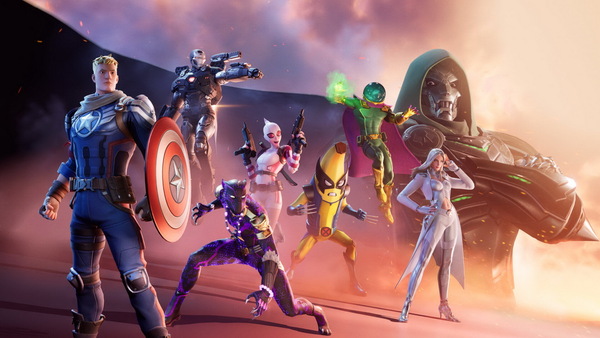Popular Now
When Fortnite was first released in 2017, it brought a unique twist to the battle royale genre—building mechanics. Unlike its contemporaries, Fortnite empowered players to instantly erect walls, ramps, and towers, turning open fields into fortified strongholds. This mechanic didn't just set the game apart; it redefined how players engage, survive, and dominate. While shooting skill is essential, mastering building is what elevates casual players into competitive elites.
This article takes an in-depth look into Fortnite's building system—how it evolved, key mechanics, strategies for both casual and pro players, and how building shapes the game’s competitive meta. Whether you're trying to climb out of Bronze or enter tournaments, understanding building is the gateway.
1. The Evolution of Fortnite's Building System
From Shelter to Strategy
In Fortnite's early days, building was a simple mechanic. Players used it primarily for protection—building one-by-one towers or simple ramps to gain elevation. Over time, however, the community discovered increasingly complex ways to utilize this system: from “90s” (spiraling ramps) to tunneling and piece control.
Patch Updates and Meta Shifts
Epic Games continuously evolved the system. Edits became smoother, turbo building was introduced, and materials were adjusted. These changes had direct effects on how competitive players approached engagements. Building went from a defensive necessity to an aggressive tool for outmaneuvering opponents.
2. The Three Core Materials: Strengths and Use Cases
Wood, Brick, and Metal
Each material in Fortnite has distinct characteristics. Wood builds the fastest but is the weakest. Brick is balanced, and metal is the strongest but builds slowly. Competitive players choose based on situation:
-
Wood: Ideal for fast cover or rushing builds
-
Brick: Good for mid-game fights and storm rotations
-
Metal: Best for endgame zones and protecting vital resources
Strategic Material Usage
Rotating through materials effectively is key. In tournaments, pros conserve metal for final circles. Casual players often misuse materials, resulting in vulnerable structures or wasted resources. Managing your materials is just as crucial as aiming.
3. Basic Build Types and When to Use Them
Essential Builds for All Skill Levels
Some basic builds every player should master include:
-
Ramp (Stair): Used to gain elevation quickly
-
Wall: Core defensive element
-
Box (1x1): Provides full cover and space to heal or reload
-
Ramp-Rush: A series of ramps and walls for aggressive pushing
Why Build Choice Matters
Choosing the right structure for the situation prevents panic-building. For example, using just ramps without side protection exposes you. Similarly, spamming walls wastes materials without offering escape or healing space.
4. Editing: The Next Level of Control
What is Editing in Fortnite?
Editing allows players to reshape existing structures. This can create windows for shooting, doors for escape, or peek angles for baiting. Mastering edits is critical for fluid movement and surprise attacks.
Training for Edit Speed
Many players use Creative maps like Raider’s Edit Courses to drill muscle memory. Practicing triple edits (floor + ramp + wall edits) or Mongraal classics (edit wall + cone drop) is essential for competitive players. The difference in milliseconds can win fights.
5. Advanced Techniques: Tunneling and High Ground Retakes
Tunneling for Endgame Survival
Tunneling involves building a protective path as you move through zones. It's most important during late-game scrims where open movement gets punished.
Types of tunnels:
-
Basic Tunnel: Flat floors with walls
-
Diagonal Tunnel: For angled zone movement
-
Double-Layer Tunnel: Adds ceiling protection
Retaking High Ground
Control of elevation wins fights. Pros use high ground retakes like side jumps, cone blocks, or 180s to counter height. Practicing these moves in Creative helps in real matches when opponents crank above you.
6. Piece Control: The Competitive Meta
What is Piece Control?
Piece control means placing builds in an area before your opponent can. It’s about owning the battlefield. For example, if you control the wall, floor, and cone in a box fight, you force your opponent to react to your edits.
Drills and Application
Use Peace Control Maps in Creative to practice pre-placing cones and walls. Focus on:
-
Taking walls
-
Placing a cone and ramp in the box
-
Forcing edits into 200-pump shots
Piece control isn’t about speed—it’s about anticipation and dominance.

7. Defensive Building: Surviving Under Pressure
Box Fighting and Reactions
When under attack, defensive building is critical. Double-layered boxes, quick cones, and elevation changes prevent getting cornered. Smart players don't spam builds—they make calculated retreats.
Common Defensive Mistakes
-
Overbuilding: Wastes materials
-
Predictable edits: Makes you easy to read
-
Not resetting edits: Leaves openings
Mastering reset mechanics is just as important as editing itself. Defensive smart plays win out over panic-building.
8. Controller vs Keyboard Building Styles
Platform Differences
Keyboard and mouse users have faster access to binds and edits, while controller players rely on optimized sensitivity and paddles. Building on controller has evolved with features like Edit on Release and Confirm Edit on Release.
Customization Tips
-
Use paddle controllers like SCUF or Xbox Elite to improve wall/ramp placement
-
Assign edits to thumbstick click or one-button setups
-
Keyboard players should optimize for pinky/reach balance across key binds
Adapting your device setup to your preferred building style is foundational for consistency.
9. Building in Competitive Play: Arena and Tournaments
Why Building Dictates Arena Ranks
In modes like Arena, where points determine your league, smart building differentiates high vs low-tier players. Rotations, map awareness, and build fights are all influenced by structure management.
Tournament Play and Endgame Meta
In FNCS and Cash Cups:
-
Layering (being on mid vs low vs high ground) impacts build style
-
Players conserve materials until the final moving zones
-
Rotations are often tunneled or launch-padded, then protected with tarps
Pro teams even assign roles: the in-game leader builds while others support and scout.

10. The Future of Building in Fortnite
Creative 2.0 and Custom Build Maps
With the rise of Creative 2.0, players can now create tailored training environments. This has sparked a renaissance in build training, from reactive edit drills to AI-fight simulations.
Zero Build Mode and Its Impact
The introduction of Zero Build in Chapter 3 created a mode without any structures. While wildly popular, it emphasized how crucial building is in traditional Fortnite. Players must now choose their preferred playstyle, but building remains the core skill of high-skill lobbies and tournament play.
Conclusion: Build Smarter, Not Just Faster
Mastering Fortnite’s building system is not just about who can crank the fastest 90s. It’s about decision-making, control, prediction, and adapting to each situation. From defending in box fights to editing your way through final zones, building determines your fate in every match.
The difference between good and great in Fortnite isn’t always aim—it’s build IQ. With tools like Creative maps, in-game challenges, and platform optimization, any player can rise through the ranks by understanding and practicing these mechanics. As the game evolves, building remains its beating heart—and those who master it will continue to dominate.


















